|
What’s The Best Rhinestone Glue for My Bling Project? Sparkle is in. Scroll through Pinterest and you’ll find numerous DIY projects and bling items for sale. However, to save money, you want to try a bedazzling project. Accordingly, finding the best rhinestone glue is one of the most important steps. Types of Rhinestone Projects Rhinestones are very versatile and can enhance almost anything:
Basically, this list encompasses so many different kinds of items made from varying materials. Some objects, like clothing, have porous surfaces. Others, like metal, are smooth. Generally, some adhesives are better at forming a strong bond on certain surfaces. Thus, you may wonder why experts don’t recommend superglue or a hot glue gun as both form a durable bond. Typically, superglue will react with the silver foil and can cloud the rhinestone. Moreover, both glues become very hard when cured. Superglue dries like glass and can shatter on impact loosening the bond. While hot glue is so hard the rhinestones could pop off under stress. Fundamentally, projects like clothing need flexibility to move with the fabric. Furthermore, the best rhinestone glues dry clear and are washable. However, you also need to check the manufacturer's recommendations before starting a bling project. Companies use different materials to make rhinestones and not all are compatible with every glue. Some glues can be corrosive and react with the rhinestone material. For example, the manufacturer does not recommend using E6000 with acrylic rhinestones. So, What’s the Best Rhinestone Glue to Use? Sometimes the type of bling project may help determine which glue is best. For example, if you’re creating nail art, you would use very different glue than blinging out shoes. Generally, you can separate bling projects into different categories: 1. Nail Art You have a choice of 2 types of adhesives for attaching rhinestones to nails: nail glue or gel. While nail glue is usually quick drying, it won’t produce a bond as strong as a gel adhesive. However, a gel adhesive will require the use of a UV light to cure. Some popular nail adhesive brands include Beetles, Makaart, and Gemgel. 2. Clothing Although you can use several methods to attach rhinestones to clothing, gluing remains the most popular. Usually, you can find many rhinestone adhesives at your local craft store:
Often, choosing from among the different glues becomes a matter of preference. Some glues, like Gem-Tac, are easier to apply to articles of clothing. Others, like E6000, set quicker allowing you to finish your project quicker. Whichever adhesive you choose, remember to wash your garment before you begin gluing rhinestones. Furthermore, it’s always a good idea to do a test area first to see the finished results. Finally, give your project plenty of time to allow the glue to cure before handling it. Moreover, to keep your bedazzled clothing looking great, use care when washing. Following some basic cleaning guidelines can help protect your garment. Turn your garment inside out when washing. Use the gentle cycle and a mild detergent. 3. Accessories Typically, rough surfaces, like fabric, provide a greater surface area for the adhesive to contact to form a stronger bond. While accessories usually have surfaces that are smooth, requiring a different kind of glue. Items made from plastic, metal, and leather are some examples. Both CG 500 and E6000 are good choices when blinging out smooth surface items such as coffee mugs or tumblers. Best Rhinestone Glue – FAQs Ready to begin your bling project but have a few more questions? Below, we answer a few commonly asked ones. If you have any other questions, use ouronline form and we’ll be happy to answer them. What’s the Best Rhinestone Size for My Project? Sometimes, the type of project you’re working on will help you decide on the best rhinestone size. For example, nail art will typically use smaller size rhinestones. However, larger size rhinestones work better on dance and skating wear. Can I Use E6000 with Jelly or Resin Rhinestones? Both jelly and resin rhinestones are a type of plastic. Eclectic, the manufacturer of E6000, doesn’t recommend using their glue on polystyrene, polyethylene, or polypropylene plastics. What’s the Difference Between Glass and Crystal Rhinestones? Typically, crystal is a kind of glass made by mixing in lead. This changes the glass allowing a greater reflection of light and the ability to bend light like a prism. Additionally, crystal is harder and denser than glass enabling manufacturers to cut more facets. However, with concern about the toxicity of lead, name-brand manufacturers have developed lead-free crystal. Instead of lead, manufacturers use barium oxide, zinc oxide, or potassium oxide. These lead-free crystal rhinestones have similar properties to leaded crystal with the same high-quality sparkle. Since 2011, Rhinestones Etc. has been selling quality embellishments. We carry one of the premier names in rhinestones, Preciosa Maxima. Made from lead-free crystal, this rhinestone has 15 facets that produce intense scintillation. Moreover, we have excellent customer service and fast processing times. Plus, we have a large selection of rhinestone colors. Browse our online store before you begin your next bling project.
0 Comments
Have you ever purchased an article of clothing that you absolutely loved? And whenever you wore it you felt exquisitely beautiful? Wearing a piece of clothing that makes you feel that way can give you confidence. Like when you enter a social event and people look at you approvingly. However, continually buying costly additions to your wardrobe can cause serious issues in your budget. Creating beautiful bedazzled clothing is one way to update your wardrobe and stay trendy. By adding rhinestones, you create a new eye-catching look. And it’s simple to do.
You Can Bling Out Any Article of Clothing
You can bedazzle any type of clothing including dresses, shirts, jeans, handbags, and shoes. And why stop there? Rhinestones can enhance sunglasses, keychains, and barrettes. All you need are a few simple tools: adhesive, tweezers or embellishment tool, and of course rhinestones.
Which Adhesive Is the Best?
There are several really good adhesives you can use. Gem-Tac, Fabri-Tac, and E6000 are just a few of the more popular ones. Just make sure your glue is washable, dries clear, and is suitable for whatever material you’re blinging. For example, some adhesives won’t adhere adequately to leather. Some others aren’t suitable for use with acrylic rhinestones. Be sure to check the glue’s application guidelines before you start your project. Otherwise, you glue choice is just a matter of preference. The Technique for Gluing Rhinestones Is Vital Many people focus solely on using the right adhesive. And while using a good glue is important, the technique for gluing rhinestones is equally important. Failure to create a good seal around your rhinestones may cause them to fall off. So, how do you apply rhinestone crystals to fabric? Rhinestones need a seal to keep them from peeling off. Thus, some glue should seep out from the edges of the rhinestone when you press it into the glue drop. Typically, your glue drop should be slightly smaller to the exact size of your rhinestone. Then allow your garment to dry flat for 24 hours. What Other Tools Should I Have? Like many other projects, there are a lot of extra tools you can buy. While they do make bedazzling clothing easier, you can begin with just a few simple ones. First, you need something to use to pick up the rhinestones. Tweezers are an inexpensive tool most people have at home. Although tweezers work adequately, you must continually remove glue build up from the tips. Plus, be careful not to squeeze the tweezers too hard or your crystal may go flying. Wax pick-up tools make applying rhinestones straightforward and uncomplicated. The rhinestones stick to the wax tip and easily dislodge into the glue. Some simple style tools are inexpensive at about $3. While other more sophisticated products like the Krystal Katana are about $25.00. Sorting trays and syringes for glue are nice to have but not essential when you start out. You can purchase these items later on if you decide to do more bling projects.
Bedazzled Clothing Is Easy and Fun to Make
So, what are you waiting for? Creating bedazzled clothing is fun and easy to do. And you’ll look great in your blinged out clothing. Do you need to purchase some rhinestones? We have a nice selection of Preciosa Rhinestones at competitive prices! With fast shipping and great customer service, we want to be your source for rhinestones. The ultimate dress-up day of the year is almost here. While most people think of Halloween as a kid’s holiday, adults can be very serious about their costumes too. But dress up isn’t only for once a year as the popularity of Cosplay has demonstrated. Adults go to great lengths to perfect their dress up. Certainly, rhinestone face art can be the final touch to authenticate the look. Perhaps you’ve seen false eyelashes with rhinestones on them. These have been available for quite some time and the wearer applies them the same as regular false eyelashes. Each and every time the wearer blinks, the rhinestones send out sparkle. Imagine larger rhinestones or shaped rhinestones enhancing your face with a dazzling array of colors. Moreover, crystalized body art opens up new possibilities. While the most common site for rhinestones is the face, you can apply crystal to any part of the body. Wearing a sleeveless dress? You can apply rhinestones design on your arms. Add rhinestones to accentuate your tattoo. Or apply a rhinestone tattoo. There are no fashion rules when using rhinestones. Adhesives for Adhering Rhinestones to Your Body Gluing rhinestones to your body presents a different scenario than gluing to clothing. First, you want to use an adhesive that isn’t permanent and is safe to use on your skin. Plus, you’ll want a glue that won’t irritate your skin, especially if yours is sensitive. Some artists used medical glue, spirit gum, or eyelash glue. Another alternative is body glue. Professional dancers often use body glue to keep their costumes in place when performing. This same glue is great for crystallized body art. Relatively inexpensive and easy to find, many body glues will provide a strong hold for 8-10 hours. Some body glues are water soluble and wash off easily. While others are water resistant and require baby oil or alcohol to remove. Be sure to check your manufacturer’s guidelines before use. Rhinestone Face Art – Where to Buy Crystals
Prismatic crystal, glass, or acrylic rhinestones are all suitable choices for rhinestones face art. Quality and price are the considerations when choosing your embellishment. Brand names like Swarovski or Preciosa are the top of the line rhinestones and hence more expensive. Your budget and the event will help you to decide on the type of rhinestone you want. Rhinestones Etc. has a variety of loose rhinestone colors and sizes available for purchase. With fast shipping and excellent customer service, our products are competitively priced. Additionally, we are an affiliate seller for our wholesaler Rhinestones Unlimited. Moreover, if you have any questions, about any of our products or buying from our affiliate, contact us here. From earliest times, sparkling gems have captivated our attention. Generally, it was only the nobility or very rich who could afford to have jewelry made from precious stones. So, jewelers sought out alternate cheaper sources to make sparkling jewelry at a lower cost. The discovery of natural rhinestones along the Rhine River provided a supply for a time. When this natural source became depleted, jewelers looked for a way to make them. In the early 1700’s a breakthrough came. A French jeweler by the name of Georg Friedrich Strass developed imitation gems later called rhinestones. He discovered that coating a piece of glass with metal powder created a shimmer in glass, similar to a gemstone. The novelty caught on although the imitations were still very expensive. Cutting each rhinestone by hand was labor intensive. Nonetheless, crafting rhinestones blossomed in Bohemia, now the Czech Republic. Individual skilled artisans honed their craft producing their version of rhinestones. One of these skilled craftsmen, Daniel Swarovski, patented an electric cutting machine. This new machine cut crystal more precisely and quickly than by hand. In 1895, he moved to Austria and opened his own manufacturing plant. Meanwhile, those individual companies in Bohemia eventually merged in 1948 to form the Preciosa brand. Today, there are many other manufacturers of rhinestones in a wide variety of shapes and colors. The Asian markets in particular, produce a large number of quality crystal rhinestones. While there are different brands of rhinestones, they all share some of the same characteristics. Types of Rhinestones Typically, there are 3 main rhinestone types: crystal, glass or acrylic. Rhinestones manufactured from crystal are the most expensive rhinestones. Primarily, crystal is glass mixed with lead or other components which make it clearer and prismatic. The prismatic effect is the ability to take light and break it up similar to a prism. Because of the safety concerns with lead, Swarovski and Preciosa no longer use lead in making their crystal. Both companies have achieved this without losing any sparkle from the rhinestone. This means that both types of rhinestones are CPSIA compliant and are safe for use with children. Similar to crystal, glass rhinestones have a coating to produce a shimmer in the rhinestone as well as facets. However, glass rhinestones do not have the prismatic quality of crystal. Nevertheless, glass rhinestones typically are precision cut by machine. Occasionally, you may see rhinestones listed as DMC or MC. These rhinestones are Asian machine cut rhinestones and they may be either crystal or glass. Finally, there are the acrylic rhinestones, the most inexpensive of all. Formed from molds, acrylic rhinestones do have facets which produce some sparkle. Acrylic rhinestones are a great choice for children’s crafts because they’re lead-free and very inexpensive. Confused about some of the rhinestone choices? Rhinestones Etc. has a large selection of rhinestones at discount prices. We’ll be glad to answer any questions you have regarding rhinestones. You can contact us here. Rhinestones Quality is based on Color, Cut, Contour, and Clarity When shopping for expensive gems, jewelers recommend examining a specimen for the 4 C’s: color, cut, clarity, and carat. The grade of each of these components helps determine the gem’s value. Although slightly different, rhinestones also have 4 C’s: color, cut, clarity, contour. Chiefly, there are many different rhinestone colors and your color choice affects the price. Crystal or clear rhinestones are the least expensive. Aurum, a gold rhinestone with a thin coating of 14k gold is the most expensive. However, within each color, the hue, tone, and saturation must be the same for consistency. The trueness and intensity of color must be the replicated throughout. Variations in color are the mark of cheaper rhinestones. Next, cut refers to the facets. Facets are the small plane surfaces cut into the rhinestone that reflect the light. The more facets, the more light reflects and hence the rhinestone has more sparkle. Swarovski makes a rhinestone with the most facets, 16 arranged in a star shape pattern called the Xirius. Preciosa manufactures a rhinestone named Maxima with 15 facets. Other rhinestone manufacturers cut between 8 and 12 facets into their rhinestones. Generally, the more facets, the more expensive the rhinestone. Chiefly, clarity is the lucidity or clearness of the rhinestone. The rhinestone should be free from spots, streaks or bubbles. Any type of cloudiness in the rhinestone is the mark of an inexpensive brand. Finally, contour refers to the consistency of the shape of the rhinestone. Typically, the shape of the rhinestone also determines its price. Round rhinestones are generally the least expensive, while fancy shapes such as baguette, navette, and others more costly. Size also affects the pricing, with rhinestones increasing in price with the size. Hot Fix Rhinestones One type of rhinestone is the hot fix which has glue attached to the flat side. To adhere, you can use a hot fix tool, iron or heat press. Swarovski, a manufacturer of rhinestones, recommends a temperature range of 250 degrees F – 340 degrees F to activate the glue. If you choose to use an iron, you will need one without steam vents. Irons with vents don’t provide a flat surface and consequently inadequate pressure when applying rhinestones. Also, water and steam can negatively affect the hot fix application. Never slide the iron as this may move the rhinestones. Always press down the iron and lift straight up before applying heat elsewhere. Another way to attach hot fix rhinestones is with a hot fix tool. These tools come with different screw-on tips to accommodate different size rhinestones. To attach, you lay the rhinestones on a flat surface, facet side up. Heat up your tool, then place the tip over the top of the rhinestone. The rhinestone will stick in the cup of the tip. After about 15 seconds, the glue will begin to bubble. Tap the rhinestone onto the fabric and the rhinestone will stick. Don’t press too hard as this can cause the glue to spread and the rhinestone to stick in the cup. Allow the rhinestones to cool, which takes only a few minutes. Unfortunately, there are some fabrics that are just not suitable for hot fix application. These include very tightly woven textiles, smooth leather or smooth imitation leather, and thin fabrics like organza. To check to see if your fabric is suitable for hot fix rhinestones, apply several drops of water. If the fabric absorbs the water droplet quickly, you can use hot fix rhinestones on it. Alternately, if the water pearls, the fabric is not suitable for hot fix rhinestones. Flat Back Rhinestones Another type of rhinestone is the non-hot fix or commonly referred to flat back. One way to attach flat backs or non-hot fix rhinestones is by gluing. There are a variety of rhinestone glues on the market. Some provide a better bond on certain surfaces than others. Be sure to check the manufacturer’s instructions for recommendations. Additionally, some glue manufacturers do not recommend using their product on cheaper rhinestones like acrylics. For example, E6000 is an industrial strength glue that produces a strong bond to smooth surfaces. It works great on metal and glass. Alternately, Gem-Tac is a great fabric glue that’s easy to apply, dries clear and is washable. There are some other adhesives like Swarovski’s 2-part epoxy, Beacon’s Fabri-Tac and such. Just make sure whichever you use, its suitable for rhinestones, dries clear and if gluing to clothes, washable. One of the key components in gluing rhinestones to clothing is the method. Many people use too little glue causing the rhinestone to peel off. It’s very important that some of the glue seeps out the sides of the rhinestone. This forms a seal to keep the rhinestone in place. Other Methods of Attaching Rhinestones Generally, there are some other ways of attaching rhinestones to fabrics: metal settings and sew-on rhinestones. To begin with, there are 2 types of metal settings, Tiffany and rim. Their basic difference is one secures form the inside of the garment and the other from the outside. In particular, a rim setting surrounds the rhinestone on the right side of the fabric. The prongs pierce and bend on the inside of the garment to secure the rhinestone. Whereas Tiffany settings have metal prongs pierce through to the outside of the fabric to grab the rhinestone. These prongs bend around the rhinestone to hold it into place. Uniquely, sew-on rhinestones have pre-drilled holes in the crystal allowing a needle to pass through. Sew-0n rhinestones are available in a large variety of shapes. Similarly, a Rose Montee is a rhinestone set in a metal setting that has cross channels on the bottom. A needle easily passes through the cross channels thus, making them easy to sew on. Moreover, thin wire can pass through these channels as well, making Rose Montees ideal for jewelry making. Sizing of Rhinestones Admittedly, the sizing of rhinestones is unique and different. The system goes back to when rhinestones were a natural resource of sparkling quartz. Finders of these sparkling quartz stones grouped them according to their size by dropping them into different size holes. This gave the sparkling quartz a number “stone size“ or “ss”. Larger size sparkling quartz had larger numbers and smaller sized quartz smaller. Even though this natural resource no longer exists, rhinestone manufacturers still use this system of measurement. Usually, retailers of rhinestones will give the equivalent millimeter size adjacent to the “ss” size so you can compare. Sometimes, too, retailers will have a sizing chart with a picture of the size of that particular rhinestone. You can view our millimeter/ss size chart here. When trying to figure out how many rhinestones you need for a project will depend on the size you choose. This is especially true when you’re covering an item with rhinestones. For example, size 20ss is 4.7mm and you need about 29 rhinestones to cover 1 square inch. Compare this to size 12ss which is 3.1mm requiring 67 rhinestones to cover 1 square inch. Of course, the type of project you’re working on may influence your choice of size as well. For instance, you probably want smaller stones for rhinestones your nails yet larger rhinestones for embellishing your wedding dress. Still confused about the right choice of rhinestone for your project? Rhinestones Etc. would love to help! We’ve been selling rhinestones for over 10 years. Drop us a line here, and we’ll get back to you quickly with an answer.
Moreover, we have a huge selection of Preciosa Maxima Rhinestones. Browse our online store to find your color. Since Czech glass makers began hand-crafting rhinestones, jewelry makers and designers have used them in their creations. Today, blinging out items continues to be very popular and fashionable. Yet, buying clothes already rhinestoned is expensive. By learning how to attach rhinestones to fabric you can save yourself a bundle and still look great. Best Ways to Attach Rhinestones To Fabric Fundamentally, it seems the list of items you can bling out is endless: handbags, shoes, key fobs, and sunglasses. Usually, to attach rhinestones to accessories, you’ll need to use an adhesive. Yet, you’ll find 4 primary ways to attach rhinestones to fabric: 1. Sew on Rhinestones Generally, a sew on rhinestone has two pre-drilled holes in the crystal. Sew on rhinestones usually offer a wide variety of shapes including navette, triangle, square, and round. Often, these rhinestones are available in different colors including the popular crystal and crystal AB. Another type of sew on rhinestone is the rose montee. These rhinestones lay in a metal setting that has cross channels underneath. A needle can easily pass through the enclosed grooves to secure it to the fabric. Additionally, a thin wire can pass through the channels to create stunning jewelry. 2. Metal Settings For Rhinestones For round rhinestones, you'll find two basic types of metal settings, Tiffany and rim. Both settings have prongs that pierce through the fabric while holding the rhinestone in place. The difference between them is how they secure the rhinestone. Tiffany settings attach from the inside of the garment. The prongs pierce through to the outside of the fabric to grab the rhinestone. You then bend the prongs to hold the rhinestone in place. On the other hand, rim settings attach from the outside of the fabric. A rim surrounds the rhinestone on the outside of the material. Then you bend the prongs on the inside of the garment to secure the crystal. 3. Hotfix Rhinestones Another type of round rhinestone is the hotfix. These have glue applied to the back side of the stone. By applying heat, you melt or activate the glue. When it cools, it becomes solid again firmly attaching to the fabric. Usually, it takes about 5 minutes for the glue to cool. However, the glue requires 24 hours to completely cure. Generally, you can apply heat using one of the following methods:
Most hotfix rhinestone manufacturers recommend a temperature range of 250 degrees F – 340 degrees F to activate the glue. Moreover, not all fabrics will allow penetration of the glue for adequate bonding. For example, you’ll need to avoid materials pre-treated with stain resistors, softeners, or Teflon. Typically, it’s always advisable to do a water pearl test first to determine if the material will absorb the glue. Place a drop of water on the fabric. If the water pearls, the fabric isn’t suitable for hotfix rhinestones. However, if the material readily absorbs the water droplet, hotfix rhinestones will bond to it. 4. Flat Back Rhinestones Undoubtedly, the most popular form of attaching rhinestones to fabric is with the use of glue. When choosing your adhesive, check with the manufacturer to see that it is good for rhinestones, washable, and dries clear. Above all, the most important thing to remember when learning how to attach rhinestones to fabric is the gluing technique. Use a drop of glue slightly smaller than the rhinestone. When you gently press the rhinestone into the glue drop, some glue should ooze out from the sides. This is very important as it helps to create a seal that prevents the rhinestone from peeling off. If your rhinestones fall off it is most likely due to using too little glue. Most glues are multi-purpose, allowing you to glue rhinestones sunglasses, tumblers, and other accessories. However, some adhesives create a stronger bond on some surfaces. For example, glass or metal is very smooth and requires a stronger glue such as E6000. Fabric or paper is porous and you can use glue such as Gem-Tac. Again, before you begin your project, check with the manufacturer to ensure the adhesive will create a strong bond. FAQs About How to Attach Rhinestones To Fabric Do you still have questions about how to attach rhinestones to fabric? Below, we answer a few of our most commonly asked questions. If you have others, please contact us here. Is One Way of Attaching Rhinestones To Fabric Better than Others? Any method you choose will securely attach your rhinestones and usually, it’s just a matter of preference. However, sometimes, you may find certain shapes only in sew on. Can You Attach Rhinestones to Sheer Fabrics? Yes. We recommend that you place a piece of wax paper underneath the fabric to avoid gluing layers together. Once the glue has cured, simply peel off the wax paper. Where Can I Buy Rhinestones? Rhinestones Etc. wants to be your source for all your bling supplies. We offer fast shipping, competitive pricing, and great customer service. Browse our online store to find the perfect color and size rhinestone for your project. Fashion trends are forever changing. Once upon a time, many people considered wearing rhinestone jewelry or bedazzled clothing a no-no. Today, glitter is a big fashion trend. You’ll find every type of clothing blinged out. Moreover, it’s simple and easy to bedazzle clothing. Yet, you may be wondering, what’s the best glue for rhinestones on fabric. A Brief History of Rhinestones and Fashion Rhinestones have a sort of roller coaster ride with the fashion industry. When first created by Georg Friedrich Strass, rhinestones were expensive and sought after by the upper class. Then, In the middle 1800s discoveries of major gem mines made diamonds widely available. Rhinestones became a “faux pas” or a fashion embarrassment. Then Coco Chanel burst onto the scene making rhinestones stylish and trendy once again. Her sense of innovation in mixing expensive with less costly materials took the world by storm. Rhinestone jewelry became very popular among all classes of people. Although designers used rhinestones to embellish clothing, it was Marylyn Monroe who make the biggest splash. The dress she wore for President Kennedy’s birthday had 2,500 hand-sewn crystals. Originally, Miss Monroe paid $1400 for the dress. In 2016 Ripley’s Believe It or Not acquired the dress for $4.8 million. Most of us don’t have that kind of money. However, you can create bedazzled clothing at a fraction of retail prices. Yet, with the large variety of fabrics, you may be asking, what’s the best glue for rhinestones on fabric? Some Recommendations for the Best Glue for Rhinestones on Fabric The variety of fabrics is endless from sheers like organza, chiffon, and tulle, to thick like denim, leather, or suede. While you can attach rhinestones by sewing and settings, you can also use an adhesive to attach rhinestones. You’ll find many different brands of rhinestone glue on the market. When choosing fabric glue for rhinestones make sure it is sure it is permanent, washable, and dries clear. Some popular brands include:
Some of the brands, like Aleene’s, make multiple products for gluing rhinestones. For example, you can buy Flexible Stretchable, Jewel It, or Jewel It Embellishing Glue Pen. Beacon offers both Fabri-Tac and Gem-Tac. Moreover, some glues work better on certain fabrics so be sure to check the manufacturer’s instructions. Natural leather, for example, has oils making it difficult for some adhesives to form lasting bonds. Additionally, some glues can be tricky to use. E6000 tends to be a bit gloppy and dries very quickly. Plus, many people don’t like the toxicity associated with it. Best Way to Glue Rhinestones on Fabric Some people assume just because you use the correct glue, your rhinestones shouldn’t ever fall off. However, there is a specific technique required to glue rhinestones on fabric.
Step 5 is very important as it creates a seal preventing the rhinestone from peeling or falling off. Once the glue dries, the glue will be clear and unnoticeable. Sheer fabrics, like organza, can allow the glue to seep into the layer beneath. In this instance, place a sheet of wax paper between the layers of the fabric. Glue as stated above and let dry. Once the glue is dry, remove the wax paper. Where to Buy Rhinestones Once understand the technique and choose the best glue for rhinestones on fabric, you’ll be able to create bedazzled clothing. You can bling out shoes, handbags, dresses, shirts, and more! Moreover, for all your rhinestone needs, Rhinestones Etc. offers discount pricing with fast shipping and great customer service. Since 2011, we’ve been helping people sparkle! Browse our online store to find your color!
Participating in a dance competition provides many great opportunities and learning experiences. Yet, lessons and entry fees can add up leaving little left over for a sparkling new dress. Instead, buy an inexpensive plain dance dress and add rhinestones. You can find a huge inventory of crystal rhinestones for dance costumes at Rhinestones Etc.
The Best Type of Rhinestones For Dance Costumes Once you've decided on a dance dress, it’s time to choose your rhinestones. The most common shape is round with a variety of options on brands, types, colors, and sizes. Primarily, you’ll find rhinestone manufacturers of plastic, glass, and crystal rhinestones. Typically, crystal rhinestones offer the greatest amount of sparkle followed by glass, resin, and acrylic. In addition, the number of facets and their arrangement will affect the play of light. Generally, manufacturers create rhinestones with a range of 10 to 15 facets. Moreover, you’ll need to choose between hotfix or glue on rhinestones. Hotfix rhinestones have glue on the backside of the rhinestone. To adhere rhinestones, you need to activate the glue using a hotfix applicator, iron, or heat press. Alternatively, glue on rhinestones require an adhesive to attach them. Next, you’ll need to choose your color. Often, many people select either crystal or crystal AB because it can be difficult to pick just the right hue. Crystal is a clear rhinestone while the AB is clear with a rainbow coating. The rainbow coating can pick up the color of the underlying fabric making it a favorite among dancers. Yet, choosing your color is a personal preference with no wrong answers. Some people like a pop of color with a contrasting hue. While others like the color to blend in with the color of the fabric. Finally, you’ll have to select a size. Rhinestone manufacturers use a unique measurement known as stone size ranging from very tiny 5ss to large 48ss. Usually, 16ss, 20ss, and 30ss are popular sizes of rhinestones for dance costumes. You can choose a single size or mix sizes for added dimension. Creating Your Rhinestone Design If this is your first time creating a bling project, it can be intimidating. However, many times the dance dress will have seams, cutouts, or straps that could use more visibility. Additionally, you can use any lines or shapes in the costume to dictate your design. Another idea is to scatter or distribute rhinestones in a random pattern. Scatter designs work well when you have a large space to fill. You can get even more creative by using different shades of color for an ombre effect. For specific curves or shapes, you can make a template. Often, it’s helpful to lay the dress flat arranging rhinestones to help create your design. When you’re ready to adhere the rhinestones to the dance costume, begin with your key element. Lay out your pattern aligning your center and working outwards. Often a ruler or tape measure can help keep your rhinestones evenly spaced. Where to Buy Rhinestones for Dance Costumes Rhinestones Etc. has been selling high-quality rhinestones since 2011. With super fast processing times and excellent customer service, we want to be your source for crystal rhinestone embellishments. Plus, we give extra discounts for bulk rhinestone orders. Browse our online store to find your perfect size and color. The gymnast stands at the corner ready to perform her floor exercise. As she beings her movements, the rhinestones on her competition outfit catch the light. A myriad of colors is reflected as she prances, somersaults and vaults across the floor. She finishes her routine, flawless just like her outfit. Do you have a daughter passionate about gymnastics? Then you know, the right costume is very important. But costumes with rhinestones are very expensive. Can you buy a plain gymnastic costume and add rhinestones yourself? Yes, you can. And gluing rhinestones yourself can save you a bundle of money. Pick your Glue Gymnastic costumes must be very stretchy to conform to every movement the gymnast makes. Generally, these outfits are made from 4-way stretch fabric. Is it difficult to glue rhinestones to stretchy fabrics? No, it is not any different than gluing to skating dresses, something I did frequently when my daughter figure skated. Just make sure the area of the costume where you are gluing lays flat. In certain places of the costume, you may need to stretch the fabric slightly to have a flat surface. Next, choose your glue. My favorite glue for adhering rhinestones to fabric is Gem-Tac. It dries, clear, is washable and is very easy to apply. Another glue many people use is E6000. I don’t like this as much as it tends to be gloppy and I find it more difficult to apply. If you choose some other glue, just make sure it is suitable for embellishments, dries clear and is washable. How to Glue Rhinestones to Gymnastic Costumes To glue rhinestones, place a drop of glue slightly smaller than the rhinestone. Pick up a rhinestone using tweezers or a wax tipped tool. Gently press it into the glue drop. Check to make sure a small amount of glue has seeped out around the rhinestones. This is very important as it makes a seal which helps protect the rhinestone from peeling off. When you have finished gluing rhinestones, leave the garment laying flat for 24 hours. Now that you see how simple it is, you can stop paying high prices for rhinestoned gymnastic costumes. Buy a plain one and dazzle it up yourself with rhinestones! Need rhinestones for a gymnastic costume? Rhinestones Etc has discount pricing and excellent customer service. And now you can get free shipping off your first purchase! Just click on the button above to get a coupon code off for free shipping off your first purchase! Rhinestone jeans are a hot fashion item. However, most retail rhinestone jeans use the cheaper less flashier rhinestones. And jeans that use higher quality rhinestones are quite pricey. Then sometimes you just have a favorite brand that you like to wear. That pair that fits so well and feels so great and it is your go-to jeans. But, sometimes even your favorite pair can use a face lift or upgrade. How about adding some bling? Why not embellish them with some rhinestones? You can buy your favorite brand and embellish them yourself and for a lot less than retail. Can you DIY Rhinestone Jeans? Will rhinestones stick to denim? Yes. Even though denim is a thick material, you can glue rhinestones to jeans. My favorite fabric glue is Gem-Tac and it works well for gluing to denim. It dries clear, is washable and the flow is easy to control. Additionally, is E6000 another popular choice for gluing rhinestones to fabric. The most important thing to remember when gluing rhinestones is to make sure some of the glue seeps out from the sides of the rhinestone. This produces a seal which helps protect the rhinestone from peeling off. Place a drop of glue slightly smaller than the rhinestone on your jeans and gently press the rhinestone into the glue drop. Some of glue should ooze out from the sides. Some ideas to get you started on your Rhinestone jeans Now that you’ve decided to embellish your jeans with rhinestones, what next? If you are a beginner, you can start with something simple. Put a few rhinestones on the back pockets. Simply glue a straight line of rhinestones along the top edge of the pocket. Shift lines and use multiple colors for a more intricate design. Another idea is to use fabric paint and rhinestones. Use a stencil and fabric paint a design on a pant leg of your jeans. Craft stores are great places to find stencils. A trick I like to use is to copy designs out of embroidery books on card stock. Using an X-acto knife, cut out the insides and you’ve got yourself a stencil. Embellish parts of the design with rhinestones to make it pop. There are so many ways to personalize your jeans with rhinestones. Search the internet for ideas to get inspired. Release your imagination to make you own unique pair of rhinestone jeans.
Do you need rhinestones to get you started on embellishing your denim jeans with rhinestones? Rhinestones Etc has discount pricing and great customer service! Browse our store for quality rhinestones to DIY your jeans. As you walk through your house, you notice an area that’s a bit drab. It has a blah kind of feeling. You want to give the area a new feeling and to make a statement. A new coat of paint is an option as is a new wall hanging. However, there is another option, one that will make light dance and your room dazzle: flat back rhinestones. These can be incorporated into any interior design project to make a room sparkle. The Earliest Use of Rhinestones in Interior Design Rhinestones have been used for centuries in interior design. The earliest is the use of crystal is in chandeliers in the 16th century. Because the crystal was so expensive to manufacture, only the very rich were able to afford them. In the 18th century, methods were devised to make crystal more cheaply thus making chandeliers more affordable. During this time also, Daniel Swarovski started producing cut stones for ornate crystal chandeliers. Even today, the Swarovski name is known for its excellence in crystal manufacturing. Today, chandeliers are hung to produce a distinct feeling of elegance. Step into any room with a chandelier and you step into a room that feels opulent and luxurious. Light passing through the crystals, refract to produce a rainbow of colors that dance in the room. But, why stop at chandeliers? Ideas for Easy Projects There are many easy rhinestone projects in interior design that a beginner can do and achieve good results. Also, flat back rhinestones can be glued to a variety of surfaces: wood, metal, fabric, paper. For example, flat back rhinestones can be glued to frames, including picture and mirror, lampshades or wall hangings. Glue some rhinestones to pillows for your couch. Add a bit of sparkle to your table by embellishing a pair of candlesticks with rhinestones. How about deer antlers? Now that makes a bold statement. Never glued rhinestones before? It’s easier than you think. Mainly, you just have to be sure you have the right glue to for the surface you are working with. You can read up on rhinestone adhesives here. Finally, if you really want an extravagant touch, Swarovski even makes wallpaper with rhinestones attached to it. Hang it on a wall for a dramatic flair. Since the price is a bit steep for this interior design idea, why not glue rhinestones onto wallpaper yourself? Use your flat back rhinestones and creativity to create the perfect living space for you. Utilize your surfaces with sparky rhinestones to customize your interior! Need rhinestones to get started on your interior design project? Rhinestones Etc. has competitive prices and great customer service!
|
KarenI have been adding bling for over 20 years. Through my projects, I hope you find inspiration. Categories
All
Archives
July 2024
|
Home About Policies Return Shipping
Contact Us Size Chart Privacy Products Reviews
Copyright 2024 Rhinestones Etc. All rights reserved.
Contact Us Size Chart Privacy Products Reviews
Copyright 2024 Rhinestones Etc. All rights reserved.

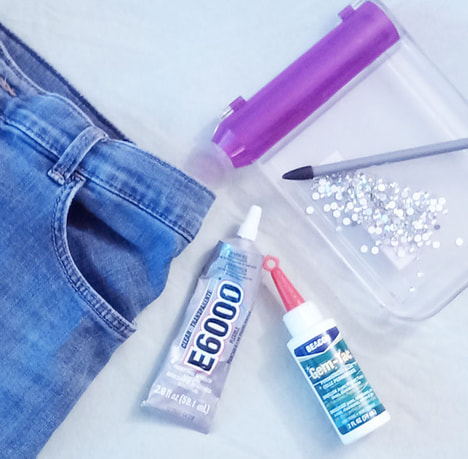
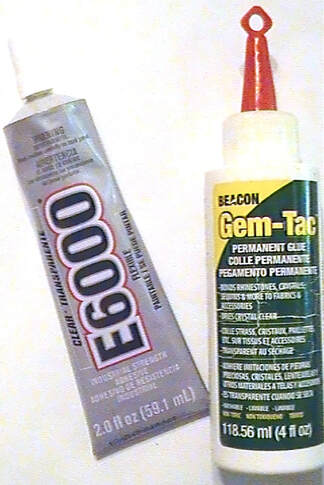
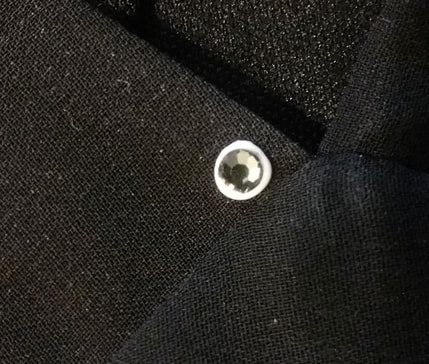
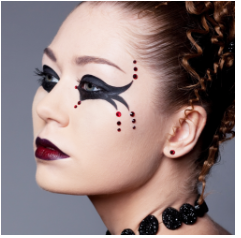


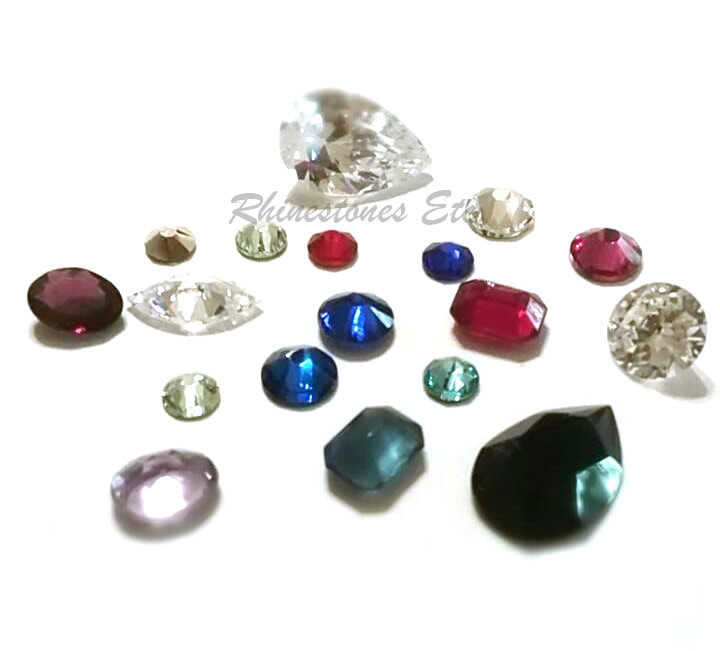
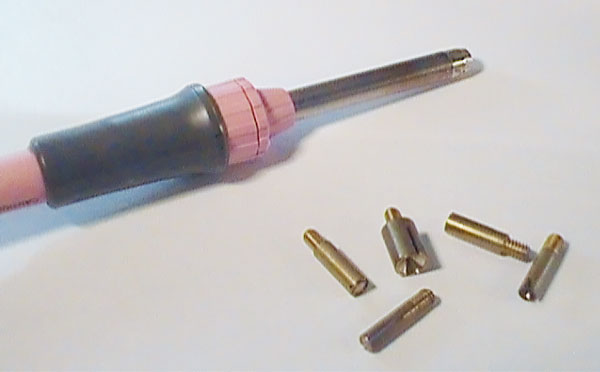
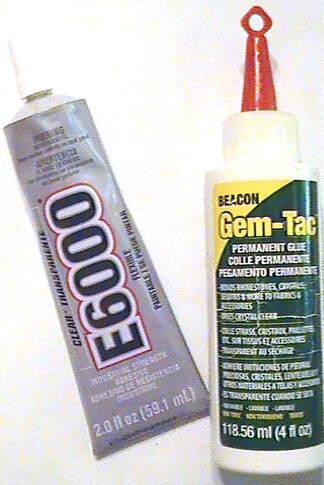
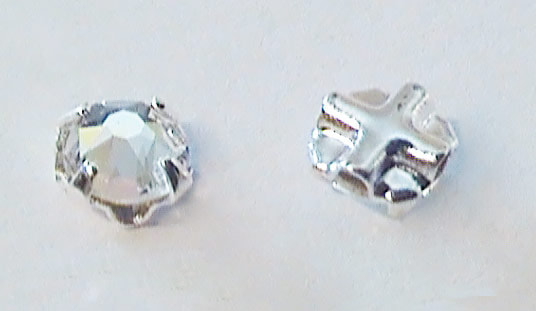
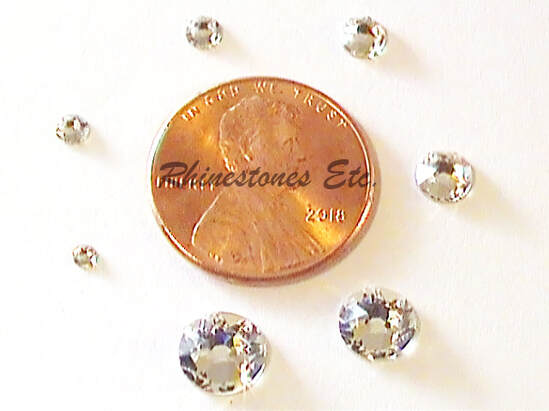
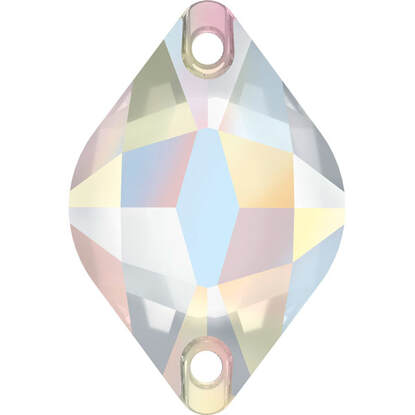
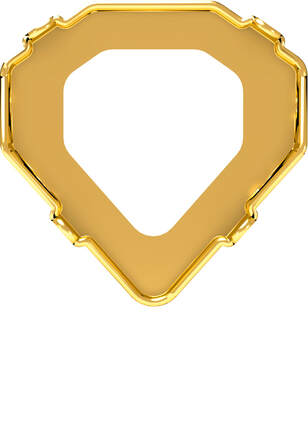
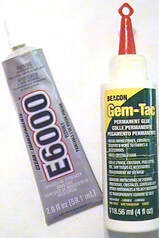
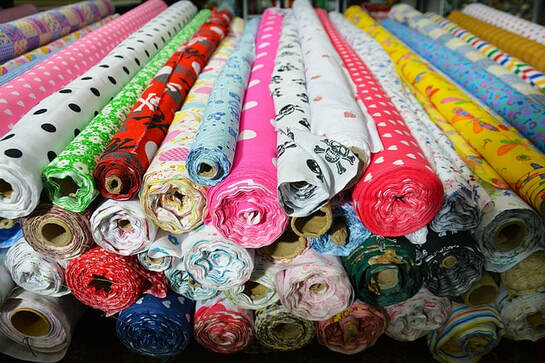
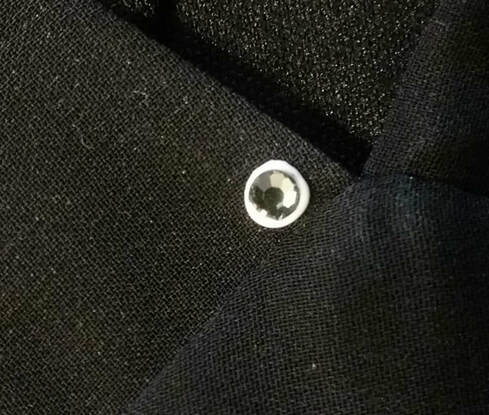
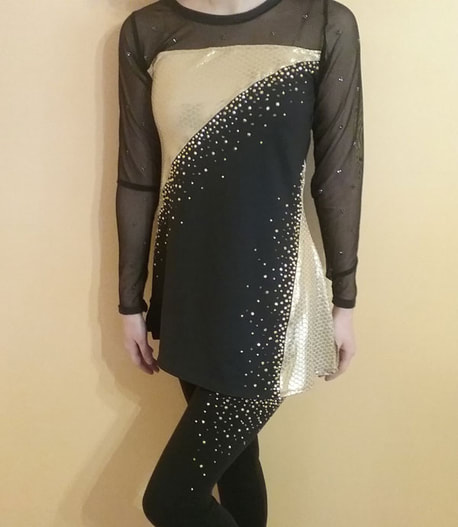

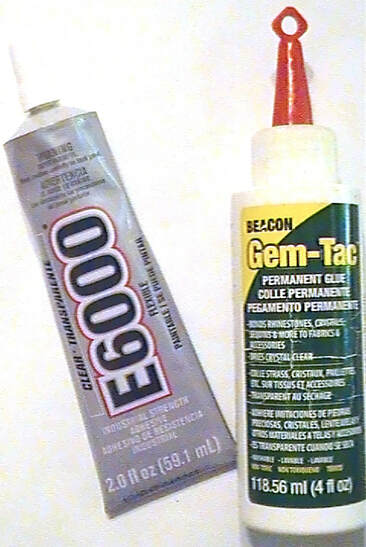
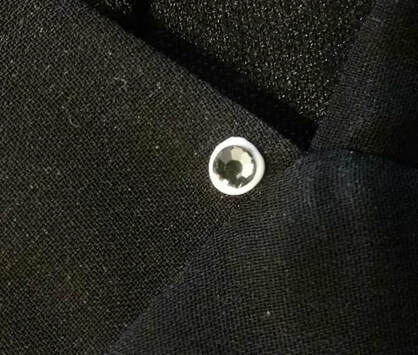
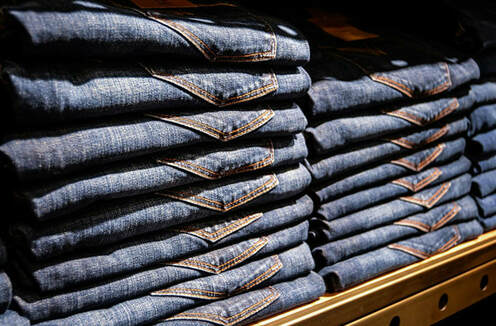
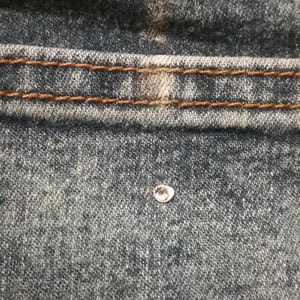
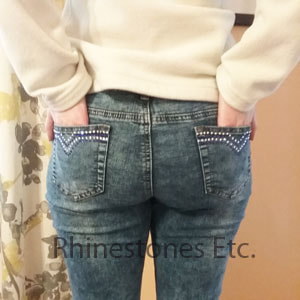
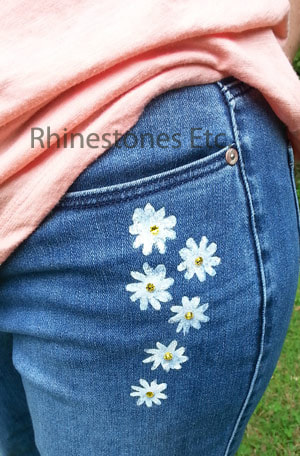
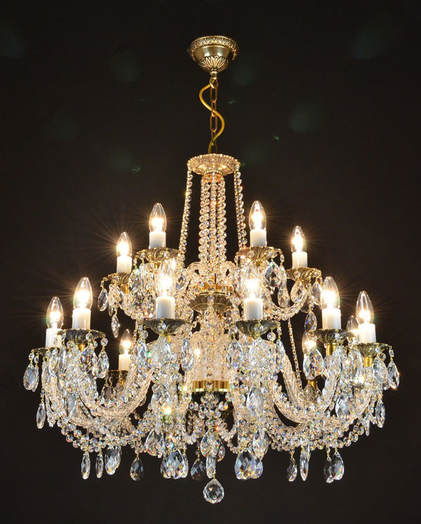
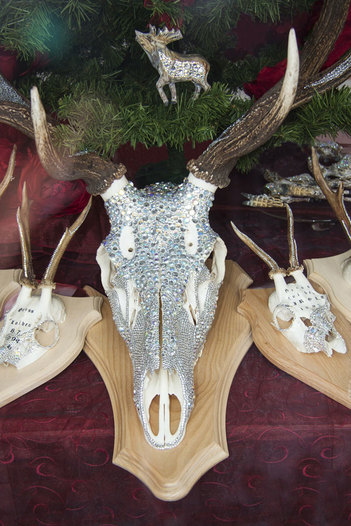
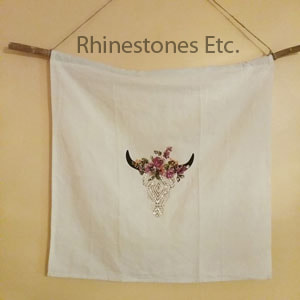
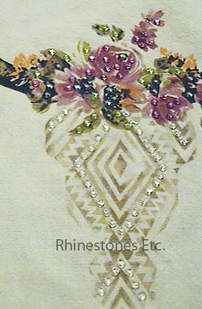
 RSS Feed
RSS Feed